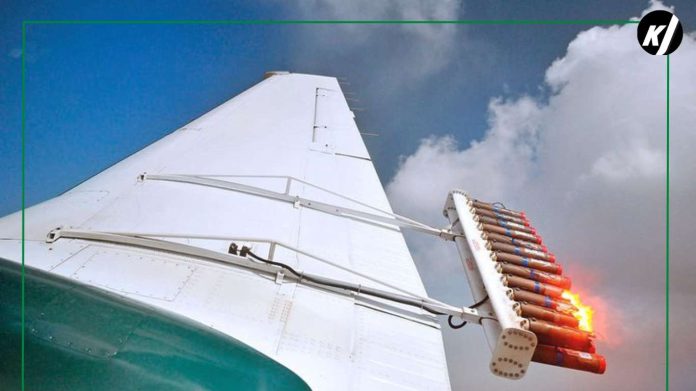Rising global temperatures have added a strain on regions like the Middle East, which is extremely vulnerable to the impacts of climate change. These nations are now faced with a big problem, how can they solve their water shortage issues?
The United Arab Emirates averages less than 200 millimeters of rainfall a year, in stark contrast to London’s average of 1,051 millimeters and Singapore’s 3,012 millimeters. In the UAE, temperatures can reach as high as 50 degrees Celsius (122° Fahrenheit) during the Summer, where 80% of the country’s landscape is covered with desert terrain. Extreme heat could exacerbate water scarcity issues and impose restraints on agricultural productivity in the country.
With water scarcity at the core of the region’s challenges, the Gulf state implemented a program aimed at addressing this issue. In the 1990s, the UAE introduced a rain enhancement methodology called cloud seeding. Cloud seeding is the process of increasing the amount of rain produced from the clouds above, which is designed to improve water shortage issues in arid regions around the emirate.
UAE now pursues to develop the capability to analyze seedability of clouds in real-time during cloud seeding flights for rain enhancement. The move will transform the way cloud seeding is performed and evaluated, with the aim of increasing rain from clouds.
This was unveiled as the UAE Research Programme for Rain Enhancement Science (UAEREP) recently attended a project kick-off meeting with Professor Daniel Rosenfeld of the Hebrew University of Jerusalem and his team, who are the award recipients of the 5th UAEREP grant cycle. The meeting was held in Abu Dhabi at the Mohamed bin Zayed University of Artificial Intelligence (MBZUAI), one of the collaborating research institutions on the project.
Nakheel-Meydan merger: A boost for Dubai’s real estate market
The project, led by Prof Rosenfeld and titled ‘Identification of Clouds’ Microphysical Seedability in an Actionable Manner’, seeks to develop the capability to detect cloud seedability in near real-time at a spatial resolution of the convective cloud cluster, based on operationally available satellite and meteorological data. Building on previous UAEREP research, this project aims to allow for concurrent assessment and guidance during cloud seeding flights. These methods are highly complementary with previous UAEREP project initiatives.

